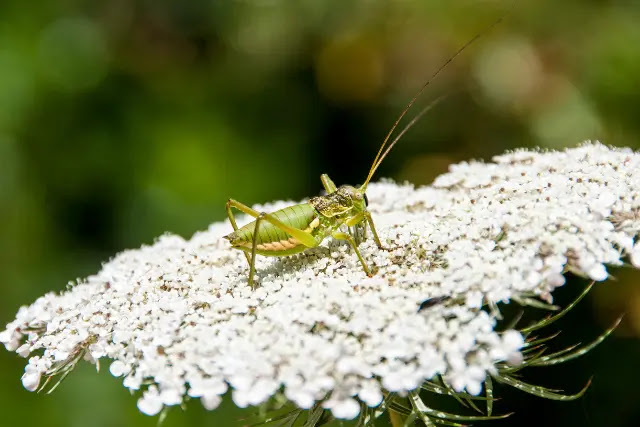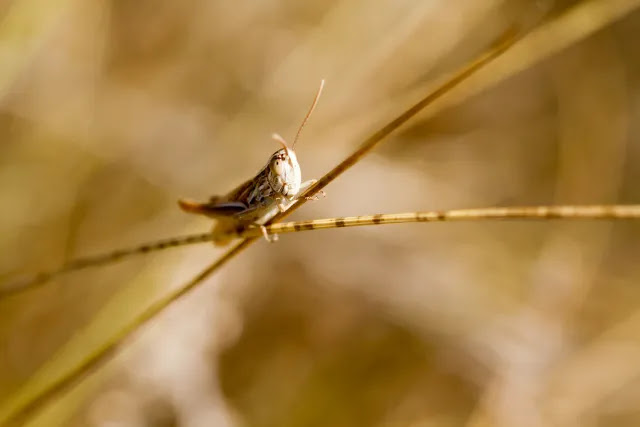Crickets are so annoying! These nocturnal invaders can keep you awake throughout the night, consequently ruining your entire day. Crickets sleep during the day and wake up at sundown in search of food.
The high-pitched sounds that keep you awake at night are mating songs by the male crickets trying to attract females that they can mate with.
A cricket infestation is not uncommon, especially during the fall, when nighttime temperatures drop. House-invading crickets are also attracted to light at night, which draws them nearer to homes.
And besides giving you sleepless nights, crickets feed on and damage everything, including fabrics, paper, linen, cotton, leather, silk, rubber, and even wood!
So yes, it's critical that homeowners know where do crickets lay eggs? When do they lay eggs? And how many eggs do they lay? It becomes easy to control and exterminate a cricket infestation with this knowledge.
What Are Crickets?
Crickets are invasive pests not known to cause any harm or danger while in their natural habitats. However, once crickets invade your home, they can cause serious damage to fabric, wool, and silk.
An adult cricket generally measures 0.8-2.0 inches in length. They have different colors like yellowish-brown or shiny black, depending on the exact species. And instead of fangs, crickets have mandibles.
These vocal pests feature 3 dark bands that run across their head to meet the eyes. You will quickly notice their long limbs that closely resemble those of grasshoppers. Most cricket species use these limbs as a defense mechanism to leap when frightened and to scare off predators.
And though they are fully winged and capable of flying, crickets mainly crawl or hop. They can jump up to 20 or more times their body size. Therefore, it's not a wonder that you find these little critters on your bathroom sink and kitchen countertops.
Crickets are quite popular due to their non-stop chirping. They are mostly heard singing to each other during late fall evenings. And even though they have been around for more than 200 million years, crickets are not endangered, with more than 4,000 species in existence today.
Crickets' Lifecycle
To help you find out where do crickets lay eggs and understand why they lay them there, we'd need to give you some insights into cricket's interesting lifecycle.
Crickets thrive in warm moist conditions, between 80°F – 90°F. A cricket lifecycle typically takes 2-3 months to complete, while the lifespan of an adult is just about 6 weeks. Often, they die of old age.
However, adult crickets also die as temperatures begin to drop later in the year. Interestingly, adult crickets can survive without feeding for up to 14 days! Sure, you can starve crickets to death, but in the meantime, they'll probably do lots of damage.
A cricket lifestyle is divided into three stages. Its life typically begins with an egg that develops into a nymph and finally an adult. But of course, mating has to happen to fertilize the egg.
Mating
Courtship in the cricket world is quite interesting.
The male crickets often have to fight each other for territories. The dominant male that gets the territory then 'sings' to attract females to mate with. This signature 'song' is produced by rubbing their forewings together, producing a shrill sound that annoys you.
The females are mute and can't chirp. They move towards the male crickets in response to the call. Once a female checks out the males on offer, she approaches the one that interests her.
The females often establish which male to mate with based on the pitch of their sounds. According to a study published in the proceeding of the National Academy of Sciences, female crickets are highly attracted to stronger males. They associate stronger males with a better ability to hunt for food and provide.
Female crickets listen keenly and determine the size of the chirping cricket through its pitch. The biggest cricket around gets the female. But before he can mate her, he needs to ensure that he has received all the right hints. And if the female cricket chooses to, she mounts him to mate and receive his sperm.
A fertile female cricket can lay eggs almost immediately after mating. She deposits the eggs in the nearest damp substrate using a tubular organ known as an ovipositor. A single female adult can lay up to 5-10 eggs per day! And upwards of a hundred eggs in her lifetime.
Eggs
After mating, the female will lay eggs. The eggs begin to hatch and become nymphs after about 13-14 days. The nymphs break the egg capsules and slowly dig out of the damp substrate.
Nymph
A nymph is the last stage before a cricket becomes an adult. In fact, nymphs closely resemble adult crickets. However, they have a few significant differences in that they are relatively smaller in size, they lack wings, and the females do not have an ovipositor yet.
Usually, a cricket nymph sheds its exoskeleton to develop into an adult, a process known as molting. Nymphs shed off their exoskeleton 8-10 times before fully becoming adults. The newly developed exoskeleton is often soft with a whitish color, but it hardens in only a few hours. And in just about a month, the nymph starts growing wings.
Unfortunately, however, most nymphs do not make it into adulthood as they fall prey to many other insects and adult crickets.
Adults
Crickets can be considered fully matured adults once their wings have developed. The biggest purpose of adult cricket is to eat and mate. The longer a female cricket lives, the more eggs she lays. Often, female crickets have to look for the most suitable place with the appropriate conditions to lay their eggs.
Where Exactly Do Crickets Lay Eggs?
Male crickets tend to destroy cricket eggs a lot! Therefore, female crickets look for a safe place from the predatory males to lay their eggs. They especially prefer places where temperatures range between 80°F-90 °F. Unfortunately, most areas that can meet these conditions are inside your house.
So, where do crickets lay eggs in the house? Female crickets find the most secretive places to hide their eggs, for instance, cracks and crevices in walls, dark flooring corners, and moist places. Note that female crickets routinely relocate their eggs to protect them from predatory males and other insects.
This continuous relocation makes it quite hard for homeowners to address cricket infestations.
How Many Eggs Do Crickets Lay?
Most adult crickets lay 5-10 eggs every day! She can lay up to 100-200 eggs throughout her lifetime. That's not to imply that crickets live for only 10 or 20 days. Typically, female crickets go through 10 egg production cycles in their lifetime.
Suppose there are only 5 fertile female crickets in your house? That gives you 500 baby crickets should you let them lay eggs for 10 days only!
However, not all eggs survive. And some baby crickets don't make it to adulthood too. Not forgetting that some female crickets are a lot less prolific than others.
How Often Do Crickets Lay Eggs?
In optimal conditions, crickets lay eggs rapidly and continuously. An adult female generally begins laying eggs 8-10 days after mating. She continues to lay in batches of 5-10 eggs for approximately the next 2 months.
While crickets mainly mate in spring, the hatching of the eggs typically depends on the current temperatures. Higher temperatures encourage egg activity. For instance, if temperatures rise to 85°F, the eggs will hatch within 7-13 days. Comparably, cricket eggs can take up to 26 days in room temperatures of 75°F to hatch.
Interestingly, female crickets mate with many male crickets. They store up the sperms and continuously lay them daily for the following 2-3 weeks. She needs to mate again and refill her sperm storage to continue laying eggs.
What Do Cricket Eggs Look Like?
Cricket eggs have a shiny yellow or whitish appearance. They measure about 2-3mm in length. The best way to tell a cricket egg is if you see egg sacks on the backside of female crickets.
What Do Crickets Eat?
Crickets are omnivorous, which means that their diet consists of plant materials and meat. They have amazingly strong jaws and teeth that easily chew meat___no, not yours, but insects! Crickets don't bite humans, and if they do (which is rare), the bite can barely break your skin.
What falls on a cricket menu primarily depends on their surrounding. For instance, if they infest your yard or garden, crickets will seriously destroy your crops, including grass, vegetables, barley, corn, and more.
Once they invade your home, these nuisance pests will eat just about anything they can access. They destroy fruits, meat, clothing, furniture and even eat other crickets in close quarters.
Both field and house crickets can actually be beneficial. They feed on live, dead, and dying insects. Crickets have a bulk of insects on their diet, from ants to aphids to mites to ladybugs and more!



